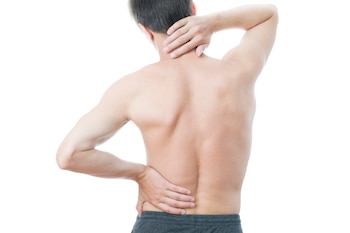




He lower back pain It affects millions of people around the world, being one of the main causes of disability. For sufferers, relapses are common and can occur even after recovery. However, a recent study has revealed a surprisingly simple and accessible solution: walk. This habit, which is part of the daily routine of many people, could be key to reducing the chances of low back pain recurring.
A team of researchers in Australia has found that walking regularly not only relieves back pain, but also helps prevent its recurrence. According to findings published in the journal The Lancetpeople who walked five times a week experienced a 28% reduction in the recurrence of their low back pain. This is encouraging news for those looking for a simple and affordable alternative to traditional low back pain treatments.
But why does walking have such a beneficial effect? Experts note that light movement, such as walking, stimulates blood flow to the spine, improving healing and strengthening key structures that support the back.
The act of walk involves a series of gentle movements that place a light, repetitive load on the backbone. This type of physical activity is key to maintaining the health of the cartilaginous discs and muscles that surround the lower back. When walking, the spine receives a fair amount of movement, which increases the flow of oxygen and nutrients towards the tissues, promoting their regeneration.

According to the researcher Mark Hancock of the Macquarie University in Sydneywho participated in the recent study, back pain is a fluctuating condition. This means that, for most people, episodes come and go. The problem is that, after recovery, many people develop a fear of movement, which can worsen their situation in the long term. Walking helps break this cycle of fear and rigidity, providing not only physical but also mental relief.
Plus, the benefits of walking go beyond your back. According to Hancockthis exercise also improves cardiovascular health, reduces stress and release endorphinsknown as the happiness hormones, which contribute to a general feeling of well-being. That is why walking is recommended not only as a treatment, but also as an effective preventive measure.
The study suggests that people who walk at least 30 minutes a dayfive days a week, are less likely to experience a new episode of low back pain. The recommended length of the walk does not have to be done in a single session; It can be divided into blocks of 10 or 15 minutes to best fit each person’s daily routine.

It is important that the pace is comfortable and sustainable. The study participants who achieved the greatest benefits began walking at a moderate pace and then gradually increased the intensity as they became more comfortable. For those who are not used to walking regularly, it is advisable to start with shorter sessions and progressively increase the duration and frequency.
Although walking may seem like a simple activity, doing it the right way is crucial to reap its full benefits. Experts recommend keeping a proper posture During the walk: the head should be upright, with the shoulders relaxed and the back straight. Make sure you don’t lean forward or hunch your shoulders, as this can put additional strain on your lower back.

In addition, it is advisable to wear comfortable shoes with good support to cushion the impact when walking. Flat, regular surfaces are ideal for avoiding injuries or unnecessary stress on the knee and back joints. According to Femi Betikua physical therapist and pilates instructor in the United States, this type of gentle, controlled walking offers a repetitive load that strengthens the muscles of the back without generating additional stress.
In addition to walk regularly, there are other habits that you can incorporate into your daily life to prevent back pain:
- Strengthen core muscles: The abdominal muscles and those surrounding the spine are essential for maintaining proper posture. Performing exercises to strengthen this area can reduce pressure on the lower back.
- Stretch regularly: Stretching the muscles in your back, legs and hips after walking or after long periods of sitting helps maintain flexibility and prevent strain.
- Maintain a healthy weight: Excess weight puts additional pressure on the spine, increasing the risk of low back pain. Adopting a balanced diet and engaging in regular physical activity can help maintain a healthy weight.
- Avoid sedentary lifestyle: Sitting for long periods of time can be bad for your back. Get up and move every hour, whether it’s for a short walk or just to stretch.

Low back pain can be debilitating, but with simple changes to your daily routine, such as walking regularly and maintaining correct posture, it is possible to reduce its impact and improve quality of life. At the end of the day, movement is key to maintaining a healthy and pain-free back.
With these tips in mind, you can begin to implement the habit of walking into your routine and enjoy its numerous benefits for both your back and your overall health.